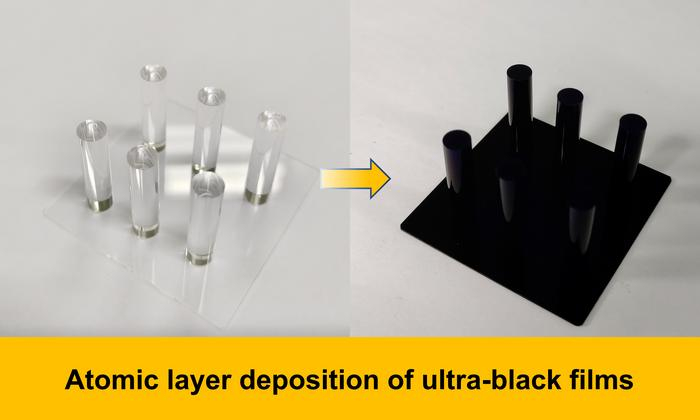A new ultrablack coating for telescopes could bring more stars into focus
Just when we thought we've given telescopes the best view of space, researchers found a way to make them even better.

The images we get these days from advanced telescopes, such as the James Webb Space Telescope, undoubtedly leave us in awe and wonder of galaxies that exist light-years away from Earth. But what if these pictures could be improved even more? Researchers from the University of Shanghai for Science and Technology and the Chinese Academy of Sciences hope they're able to help with just that through their development of a thin, ultrablack film coating for aerospace-grade magnesium alloys.
Think about it this way — when you want to see the stars and look for planets on a clear night, you need it to be as dark as possible. So, to accomplish this, you may drive away from city lights and into a more rural location where you can find yourself in complete darkness, with the exception of the moonlight, perhaps. The same concept is true for astronomers working with precision optics. But, they get a little more inventive. To achieve the darkest of darkness, they don't just seek out areas without city lights. They also incorporate black paint in their stargazing processes, coating their devices with such pigment to reduce stray light as much as possible and provide the best picture and performance they can. The same theory applies when building a telescope that operates in space as well.
With this in mind, the team's new black coating can absorb a whopping 99.3% of light in even the harshest of conditions.
"Existing black coatings like vertically aligned carbon nanotubes or black silicon are limited by fragility," Yunzhen Cao, study co-author and professor at the Shanghai Institute of Ceramics, Chinese Academy of Sciences said in a statement. "It is also difficult for many other coating methods to apply coatings inside a tube or on other complicated structures. This is important for their application in optical devices as they often have significant curvature or intricate shapes."
The research team used atomic layer deposition (ALD) to address these concerns, which is a manufacturing technique that takes place in a vacuum chamber and exposes a target to specific types of gas. The ultrablack coating is created with alternating layers of aluminum-doped titanium carbide (TiAlC) and silicon nitride (SiO2) which, when combined, act as a barrier to nearly all light.
"One big advantage of the ALD method lies in its excellent step-coverage ability, which means we can obtain uniform film coverage on very complex surfaces, such as cylinders, pillars, and trenches," Cao said. "TiAlC acted as an absorbing layer, and SiO2 was employed to create an anti-reflection structure and as a result, nearly all of the incident light is trapped in the multilayer film, achieving efficient light absorption."
From the testing, the team concluded that 99.3% of light wavelengths from across a wide range of the electromagnetic spectrum were absorbed on average, spanning from violet light at 400 nanometers to up to near infrared light at 1,000 nanometers. Researchers hope that this coating will improve the next generation of space telescopes and optical hardware significantly, and allow them to perform even better than before in even the harshest of conditions.
Breaking space news, the latest updates on rocket launches, skywatching events and more!
"What's more, the film shows superb stability in adverse environments, and is tough enough to withstand friction, heat, damp conditions, and extreme temperature changes," Cao said.
The study was published on March 12 in the Journal of Vacuum Science and Technology A.

Meredith is a regional Murrow award-winning Certified Broadcast Meteorologist and science/space correspondent. She most recently was a Freelance Meteorologist for NY 1 in New York City & the 19 First Alert Weather Team in Cleveland. A self-described "Rocket Girl," Meredith's personal and professional work has drawn recognition over the last decade, including the inaugural Valparaiso University Alumni Association First Decade Achievement Award, two special reports in News 12's Climate Special "Saving Our Shores" that won a Regional Edward R. Murrow Award, multiple Fair Media Council Folio & Press Club of Long Island awards for meteorology & reporting, and a Long Island Business News & NYC TV Week "40 Under 40" Award.

